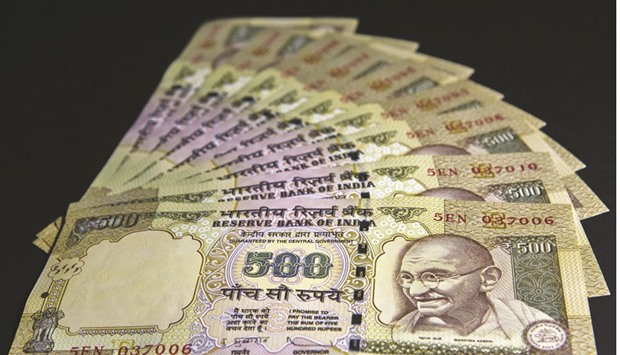Indian stocks rose in thin trading, with automobile and pharmaceutical companies helping the benchmark index extend a second week of advances.
Tata Motors, owner of the Jaguar Land Rover brand of luxury vehicles, rallied the most in a month, while Maruti Suzuki India, the biggest gainer this year on the S&P BSE Sensex, increased from a two-week low. Dr Reddy’s Laboratories was the best performer on the 30-stock gauge, while Sun Pharmaceutical Industries, the most valuable drugmaker, climbed to a seven-week high. NTPC, the largest power producer, climbed for an eighth day, its longest streak since April 2013.
The Sensex and the Nifty 50 Index each added 0.8% at the close in Mumbai, after rising 1.3% last week. Trading volumes in Nifty stocks were 13% below the 30-day average. Overseas investors have been net buyers of local equities over the past two weeks, trimming this month’s outflow to $303mn.
“Foreign funds are back and this is giving some comfort,” Chokkalingam G, managing director at Mumbai-based Equinomics Research & Advisory, said by phone. “We are very hopeful that 2016 will be a better year for Indian equities. We are advising investors to focus on mid-caps and small-caps” in the sugar, pharmaceutical and information-technology industries, he said.
Tata Motors surged 3%, the most since November 26. The stock has rallied 32% in the current quarter, paring its annual loss to 20%. Maruti Suzuki added 0.9%, increasing this year’s advance to 39%, following an 89% surge in 2014.
Dr Reddy’s Laboratories jumped 3.7%, while Sun Pharma gained 2.6% to its highest level since November 5. NTPC advanced 3.3% to its highest level since May 11.
The Sensex, which has fallen 5.3% so far this year, trades at 15.6 times its projected 12-month earnings, compared with a multiple of 11.1 for the MSCI Emerging Markets Index.
Meanwhile the rupee climbed to a five-week high of 66.0975 a dollar before closing at 66.1975 in Mumbai, up less than 0.1% from December 23, according to prices from local banks compiled by Bloomberg. The currency’s eight-day rising streak is the longest since June 2011 and has contributed to its 0.7% advance in December, the second-best performance in Asia excluding Japan. The rupee has declined 4.8% in 2015.
The rupee rose for an eighth day amid speculation global funds will resume purchases of the nation’s debt after a two-month sell-off.
India will grant overseas investors access to an additional Rs165bn ($2.5bn) of sovereign and state-government notes from January 1, as part of a September plan to allow a phased increase in foreign-investment limits. The new quotas will attract funds, according to Edelweiss Financial Services and RBL Bank, after global holdings of rupee-denominated securities dropped Rs91.6bn over December and November amid a rise in US interest rates.
“The rupee will be in an appreciative trend as investors return to higher-yielding Indian assets,” said Ankur Jhaveri, co-head of currencies and rates at Edelweiss in Mumbai, adding that the currency will outperform Asian peers.
Investing in rupees will earn 8%, including interest, by end-2016, estimates compiled by Bloomberg show. That’s the most in the region. Indian bond and currency markets were shut Thursday and Friday for local holidays.
Ten-year Indian sovereign bonds halted a two-day advance on concern demand for existing securities will weaken as auctions of government debt resume, according to PNB Gilts. The yield on notes due May 2025 rose one basis point to 7.76%, prices from the central bank’s trading system show.
India plans to sell Rs140bn of notes this week, according to an issuance calendar on the website of the central bank, which manages the government’s borrowing program. Prime Minister Narendra Modi’s administration last sold debt at a December 11 sale, raising Rs150bn after underwriters stepped in to purchase unsold securities.

The rupee climbed to 66.1975 a dollar yesterday
